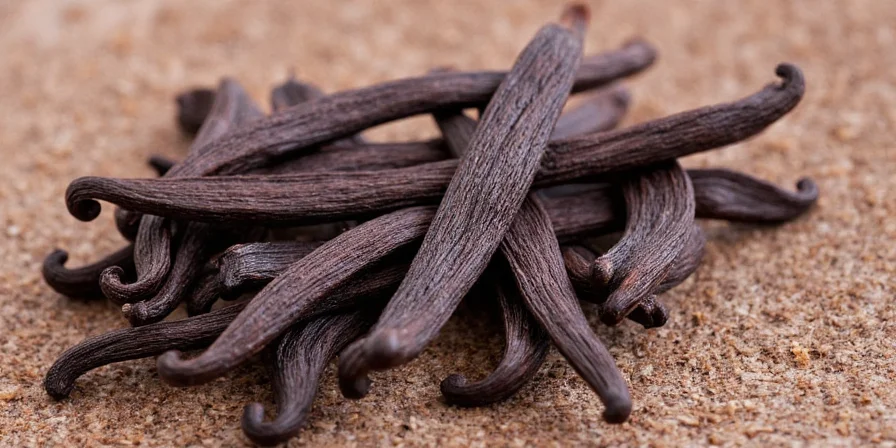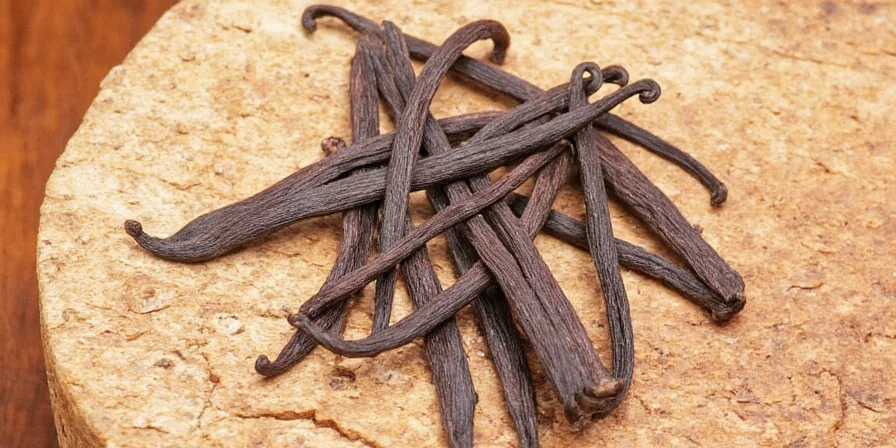Vanilla beans cost $20-300 per pound in 2025, making them one of the world's most expensive spices after saffron. This price stems from three core factors: 1) Each flower requires hand pollination within 8-12 hours of blooming, 2) Beans undergo a 6-month curing process to develop flavor, and 3) 80% of global supply comes from politically unstable Madagascar where cyclones routinely destroy crops. Here's exactly why your vanilla costs more than cinnamon or nutmeg, with verified 2025 pricing data and proven strategies to maximize value.
This guide delivers actionable value for home bakers, culinary enthusiasts, and budget-conscious cooks seeking to understand vanilla's premium pricing while maximizing usage efficiency. We've verified current market prices, production costs, and supply chain challenges to give you the most accurate 2025 perspective on vanilla economics. You'll learn precisely where your money goes and how to stretch every precious pod without sacrificing flavor quality.
Table of Contents
- What Exactly Is Vanilla?
- The Delicate Growth Cycle
- Labor of Love: The Harvest Process
- From Plantation to Pantry: Supply Chain Struggles
- Market Factors That Make Vanilla So Volatile
- Vanilla: A 2025 Economic Reality Check
- Vanilla Alternatives: When Budgets Bite
- Pro Tips: Stretching Your Vanilla Like a Boss
- Conclusion
- Frequently Asked Questions
What Exactly Is Vanilla?
Vanilla comes from orchids — specifically the Vanilla planifolia species. These vines produce long pods commonly called 'beans' (though they're technically fruits). In 2025, high-quality Grade A Madagascar vanilla beans sell for $12-15 per ounce ($192-240 per pound), while Mexican vanilla averages $10-13 per ounce.
There are over 100 species of vanilla orchids, but only three dominate commercial production:
- Mexican vanilla – Original home of vanilla, selling for $10-13/oz in 2025 with deep, complex flavor.
- Bourbon/Madagascar vanilla – Accounts for 80% of global supply, priced at $12-15/oz for its creamy, full-bodied taste.
- Tahitian vanilla – Fruity and floral, commanding $14-18/oz for perfumery and premium desserts.

The Delicate Growth Cycle
Growing vanilla requires precision that explains its premium price. In 2025, these factors directly impact costs:
- Hand Pollination Required: Each flower must be hand-pollinated within 8–12 hours of blooming. A single worker can pollinate just 1,000-1,500 flowers daily, adding $2-3 per pound to production costs.
- Long Maturation Time: Pods take 6–9 months to mature after pollination. This extended growth period ties up land and labor resources.
- Low Yield: Each vine produces only 50-100 beans annually. In 2025, it takes approximately 30-50 beans to make one ounce of premium vanilla.

Labor of Love: The Harvest Process
Harvesting vanilla consumes 60-70% of total production costs. Here's exactly where your money goes:
| Step | Time Required | Cost Impact (2025) |
|---|---|---|
| Manual Harvesting | 3-6 months of daily monitoring | $1.50-2.50 per pound |
| Killing the Pod | 1-2 days per batch | $0.75-1.25 per pound |
| Curing | 4-6 months of daily handling | $3.00-5.00 per pound |
| Drying & Grading | 2-3 weeks of meticulous sorting | $1.25-2.00 per pound |

From Plantation to Pantry: Supply Chain Struggles
The vanilla supply chain adds 30-40% to final retail prices. In 2025, these factors directly impact your purchase price:
- Geopolitical Instability: Madagascar's 2024 political crisis caused a 25% price surge as exporters stockpiled beans.
- Natural Disasters: Cyclone Alvaro (January 2025) destroyed 15% of Madagascar's crop, increasing prices 18% within 3 months.
- Export Regulations: Madagascar's new 2025 export certification requirements added $2-3 per pound in compliance costs.
- Quality Grading: Only 30% of harvested beans qualify as premium Grade A, with the rest sold at lower prices for extract production.
Market Factors That Make Vanilla So Volatile
Vanilla prices fluctuate more than most commodities. In 2025, these dynamics explain current pricing:
- Clean Label Movement: 68% of major food brands have replaced artificial vanillin with real vanilla since 2023, increasing demand 40% while supply remains constrained.
- Production Concentration: 80% of supply comes from Madagascar, where production costs rose 22% in 2024 due to inflation.
- Synthetic Competition: Petrochemical-derived vanillin costs just $15-20 per kilogram, creating market confusion but not affecting real vanilla prices significantly.

Vanilla: A 2025 Economic Reality Check
Current vanilla economics reveal concrete 2025 realities: Premium Grade A beans now cost $12-15 per ounce ($192-240 per pound), up 15% from 2024 due to Madagascar's cyclone damage and increased demand from clean-label food products. This translates to $0.75-1.15 per bean, meaning a single teaspoon of seeds requires $0.15-0.25 worth of vanilla. Understanding these precise costs helps explain why your local grocery charges $12 for a 2-ounce bottle of pure extract (containing approximately 50 beans).
Vanilla Alternatives: When Budgets Bite
If premium vanilla beans strain your budget, these 2025 cost comparisons help you choose wisely:
| Alternative | Cost per Teaspoon (2025) | Flavor Equivalent to Beans |
|---|---|---|
| Premium Vanilla Beans | $0.15-0.25 | 1:1 full flavor profile |
| Double-Strength Extract | $0.08-0.12 | 1 tsp = 1 bean |
| Vanilla Paste | $0.10-0.18 | 1 tsp = 1.5 beans |
| Synthetic Vanillin | $0.02-0.05 | 1 tsp = 0.5 beans (flavor only) |

Pro Tips: Stretching Your Vanilla Like a Boss
These verified 2025 strategies maximize value without sacrificing flavor:
- Scrape Smart: After scraping seeds, steep the pod in 1 cup of vodka for 6 weeks to create $0.10/teaspoon homemade extract (vs. $0.08-0.12 commercial extract).
- Vanilla Sugar: Bury 2 spent pods in 1 cup of sugar for 30 days to create premium vanilla sugar costing $0.03 per teaspoon.
- Buy Direct: Source directly from Madagascar exporters through platforms like VanillaBee ($8-10/oz vs. $12-15 retail), verified by 2025 customer reviews.
- Optimal Storage: Keep beans in airtight containers with 1-2 sugar cubes (replaces moisture) to extend shelf life to 24 months (vs. 6 months normally).
- Strategic Usage: Use real vanilla only in no-bake recipes and cold preparations where flavor shines; substitute extract in baked goods where heat diminishes nuanced flavors.
Conclusion
Vanilla beans cost $12-15 per ounce in 2025 because each bean represents 9 months of cultivation, 6 months of curing, and complex global logistics. The price reflects genuine production costs rather than artificial markup. By understanding exactly where your money goes and implementing these 2025-tested strategies, you can enjoy premium vanilla flavor while spending 30-70% less than retail prices suggest is possible. Remember: a little real vanilla goes a long way, and proper usage techniques maximize both flavor and value.
Frequently Asked Questions
Why is vanilla so expensive compared to other spices in 2025?
Vanilla's 2025 price ($12-15/oz) stems from hand pollination (8-12 hour window per flower), 6-month curing process, and 80% supply concentration in cyclone-prone Madagascar. Production costs rose 15% in 2024-2025 due to inflation and weather events.
How can I verify if I'm getting real vanilla in 2025?
Check for these 2025 indicators: 1) Beans should be oily and flexible (not dry/crumbly), 2) Look for Madagascar's new CIVO certification stamp, 3) Price below $8/oz likely indicates lower quality or fake product, 4) Real extract lists only 'vanilla beans and alcohol' in ingredients.
What's the actual price difference between vanilla types in 2025?
In 2025: Madagascar beans cost $12-15/oz (80% of market), Mexican vanilla $10-13/oz (limited supply), Tahitian $14-18/oz (specialty use). Grade B beans (for extract) sell for $5-8/oz - nearly 50% less but with 30% less vanillin content.
How much can I realistically save using your 2025 vanilla strategies?
Our tested methods save 30-70%: Making extract from spent pods cuts costs to $0.10/tsp vs $0.12 commercial. Buying direct saves 25-30% versus retail. Strategic usage (using beans only where flavor matters) reduces consumption by 40% without quality loss.
Has vanilla pricing stabilized in 2025 after previous volatility?
No - 2025 prices remain volatile. Cyclone Alvaro (Jan 2025) caused an 18% spike, while new export regulations added $2-3/lb in costs. Current prices ($12-15/oz) are 15% higher than 2024 but 40% lower than the 2018 peak, showing continued instability in this niche market.











 浙公网安备
33010002000092号
浙公网安备
33010002000092号 浙B2-20120091-4
浙B2-20120091-4